Abstract
Three experiments examined the assertion that presession handling cues that accompany training with reinforcement might account for spontaneous recovery when they reoccur following extinction. In Experiment 1, after extensive training on a variable-interval schedule, key pecking in pigeons was extinguished following either normal or distinctively different handling and transportational cues. Those cues resulted in enhanced spontaneous recovery 24 hr later when normal cues were reinstated. In Experiment 2, however, subjects tested following the normal handling cues showed no more spontaneous recovery than did subjects that spent the entire extinction-test interval in the experimental chambers and thus were tested without handling cues altogether. In Experiment 3, a group whose test for recovery began 10 min after being placed in the chambers yielded as much spontaneous recovery as did a group tested normally. Furthermore, a group for which extinction began at mid-session and for which handling therefore could not be a discriminative cue for extinction showed no more spontaneous recovery than did the other two groups. Handling cues thus contributed to spontaneous recovery only after explicit discrimination training, as provided in Experiment 1.
Keywords: spontaneous recovery, handling cues, transportational cues, retrieval cues, extinction, discrimination training, key pecking, pigeons
Full text
PDF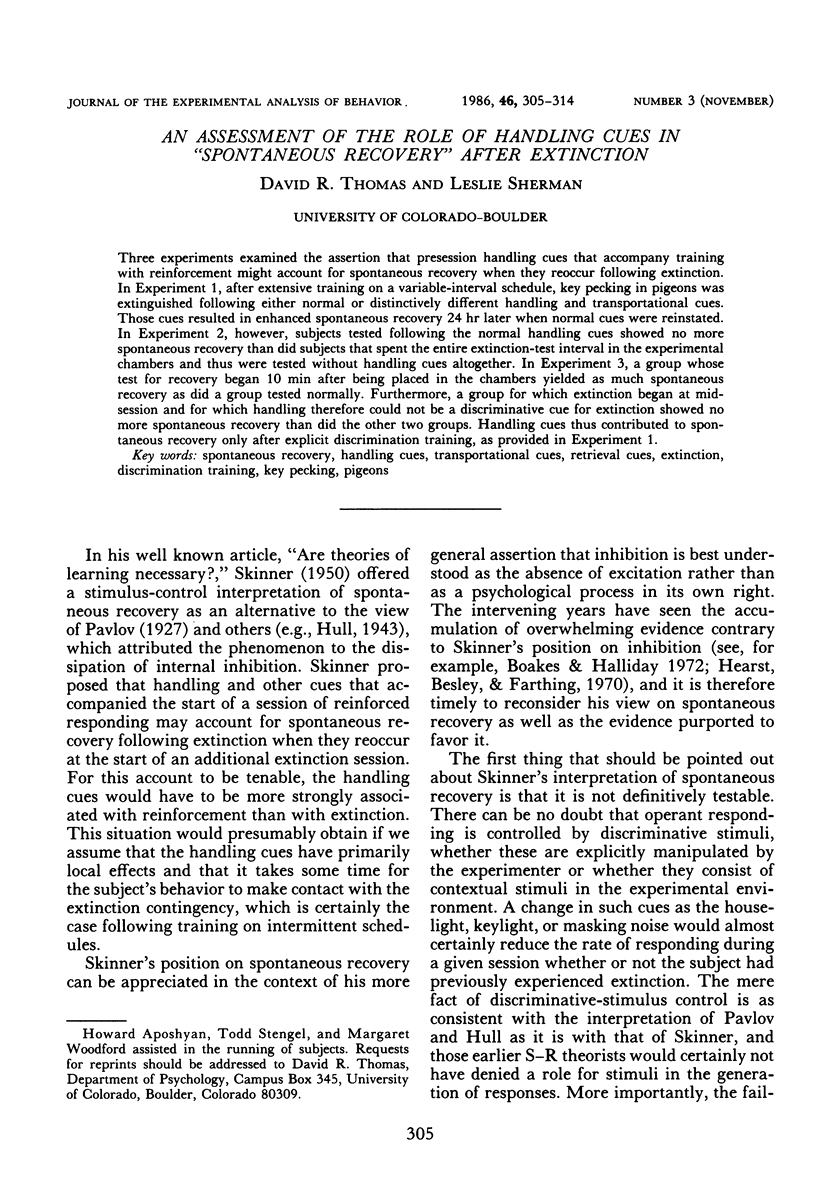
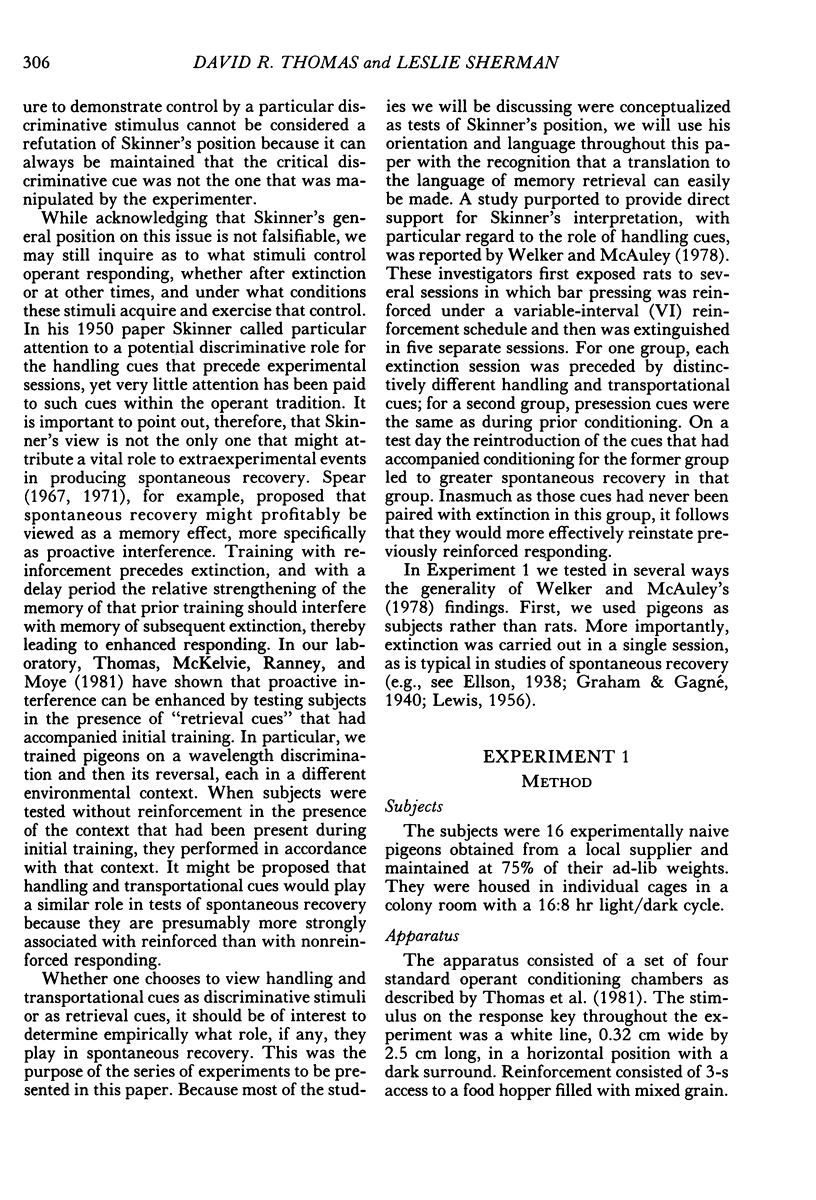
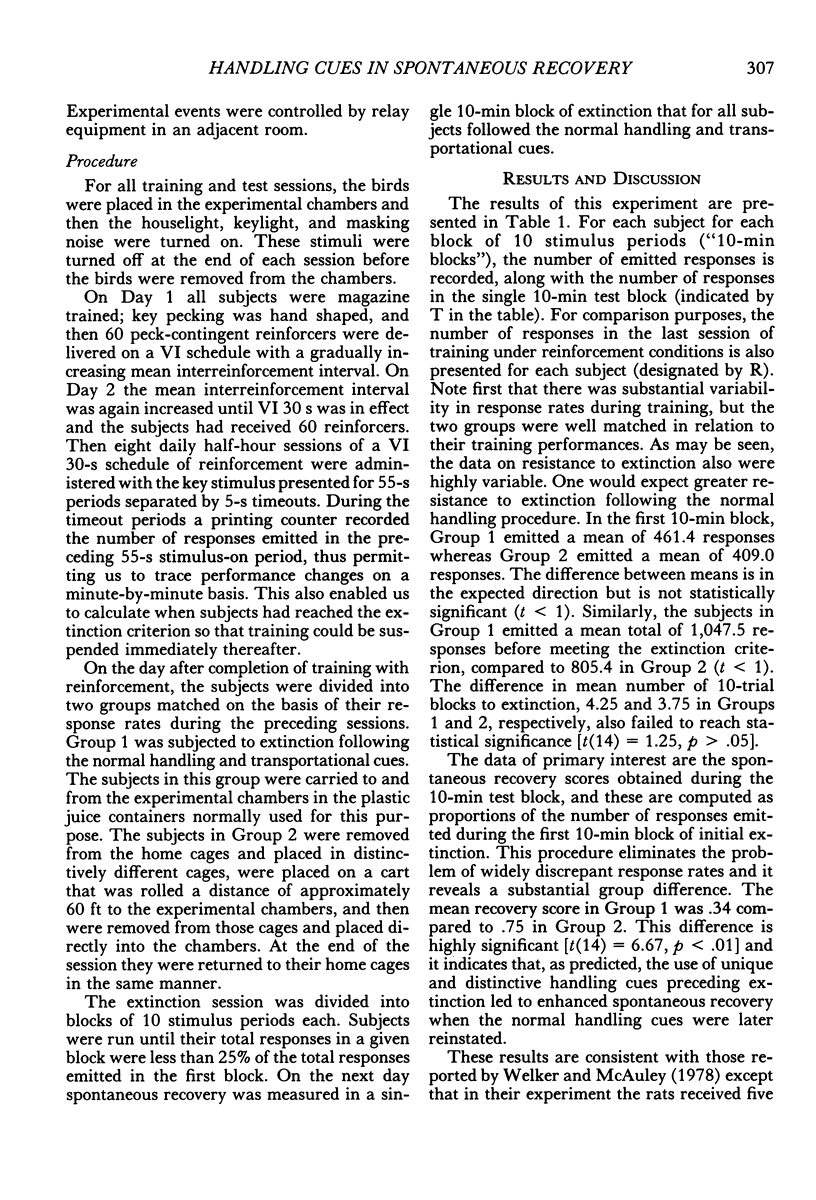
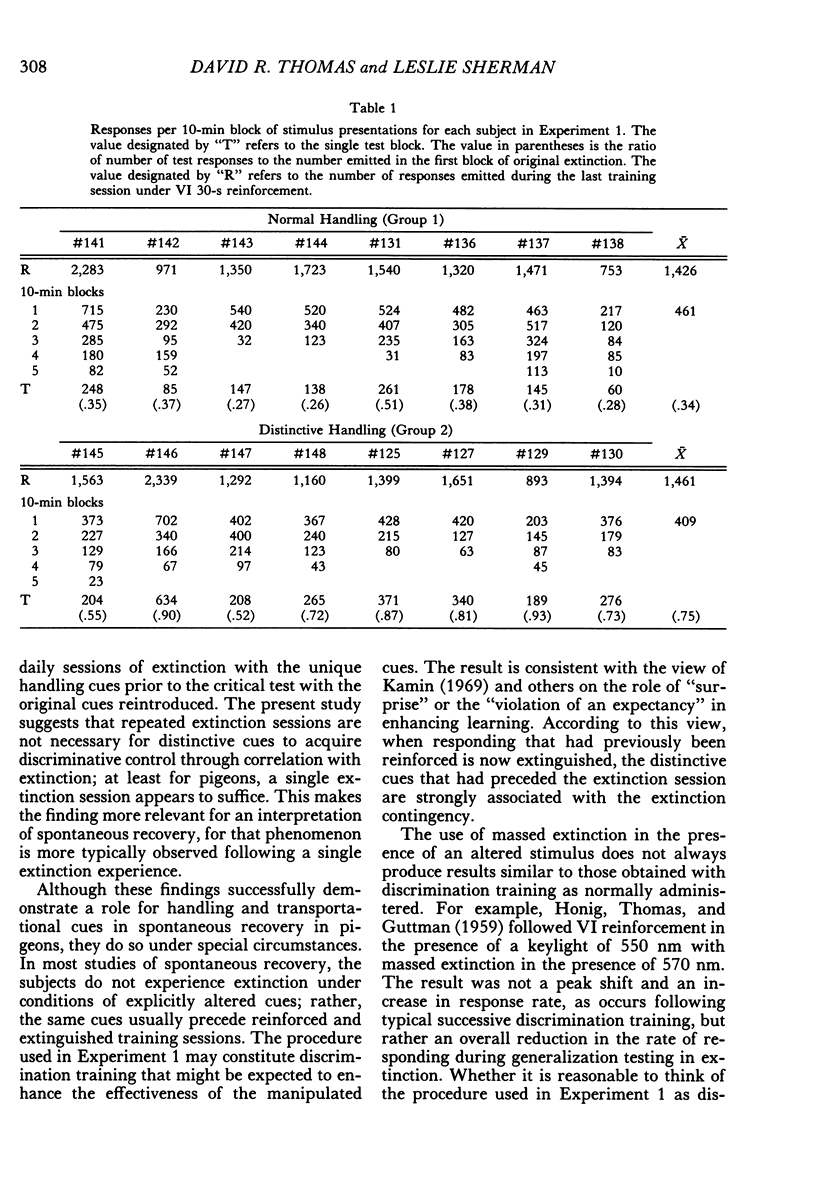
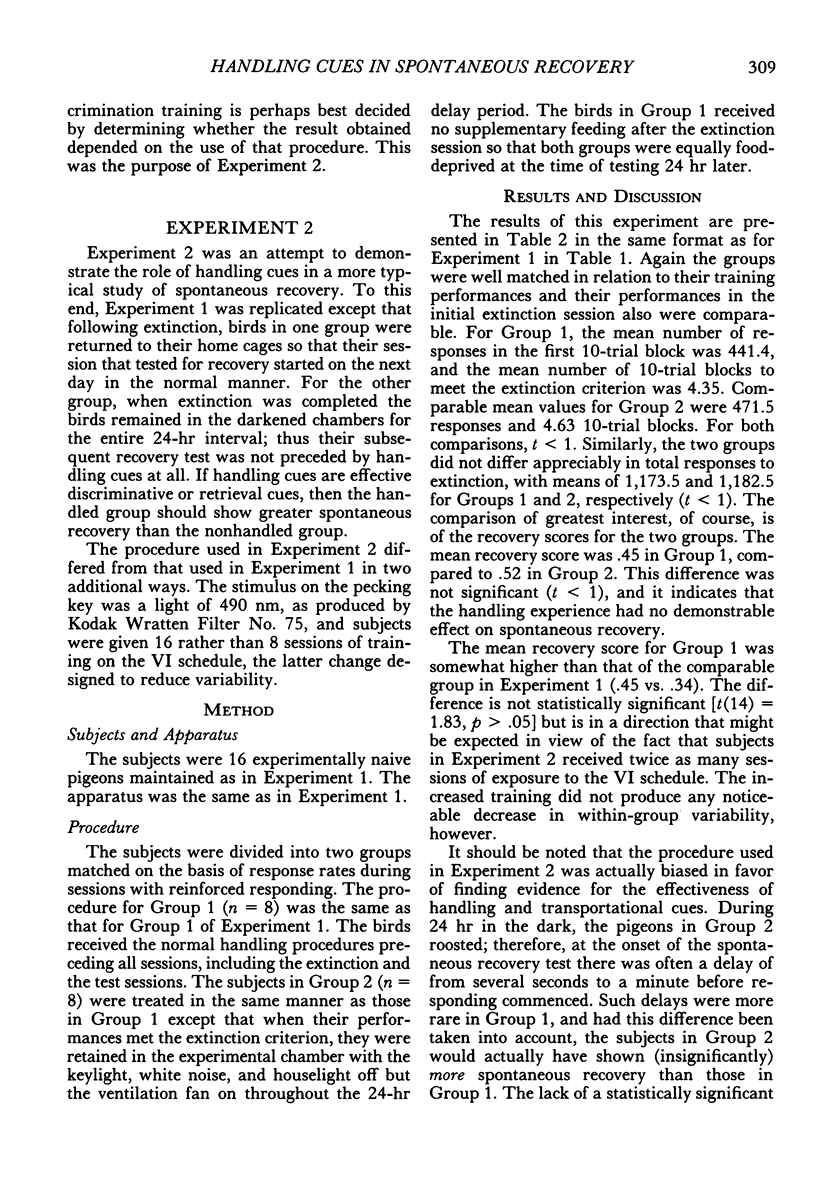
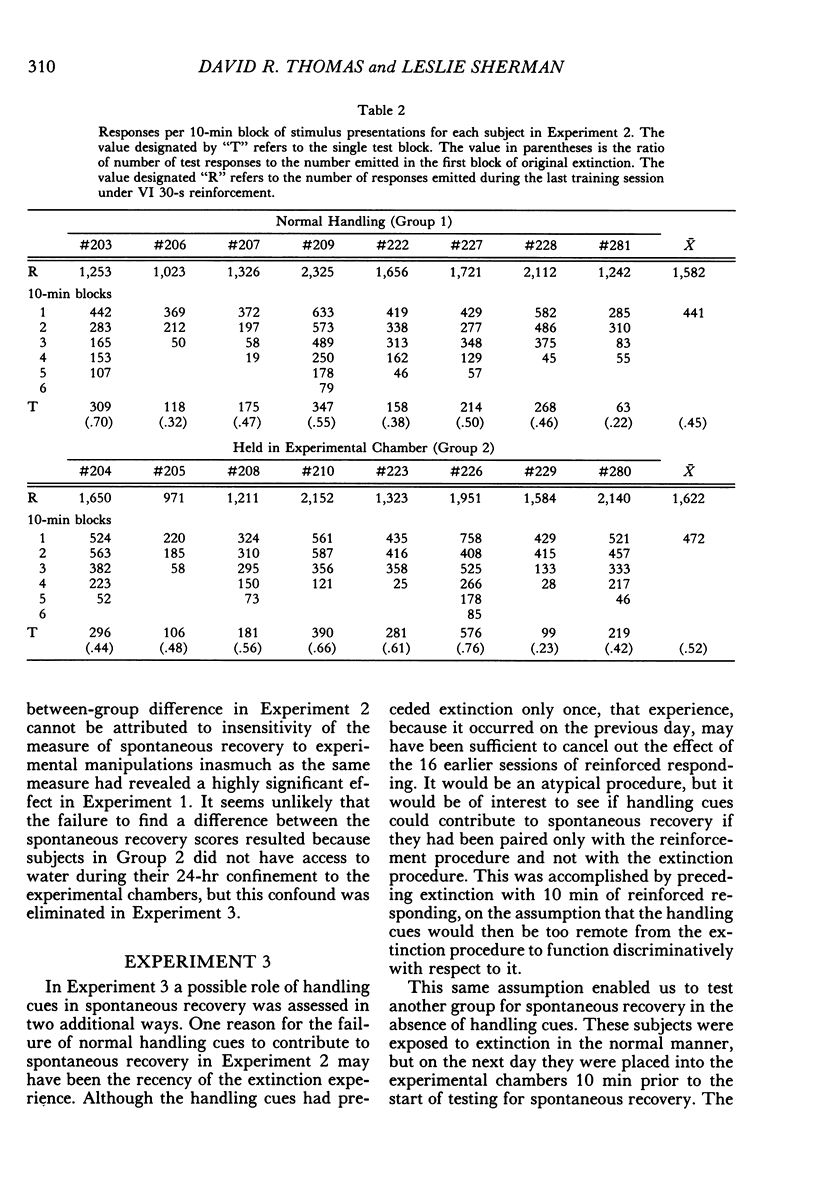
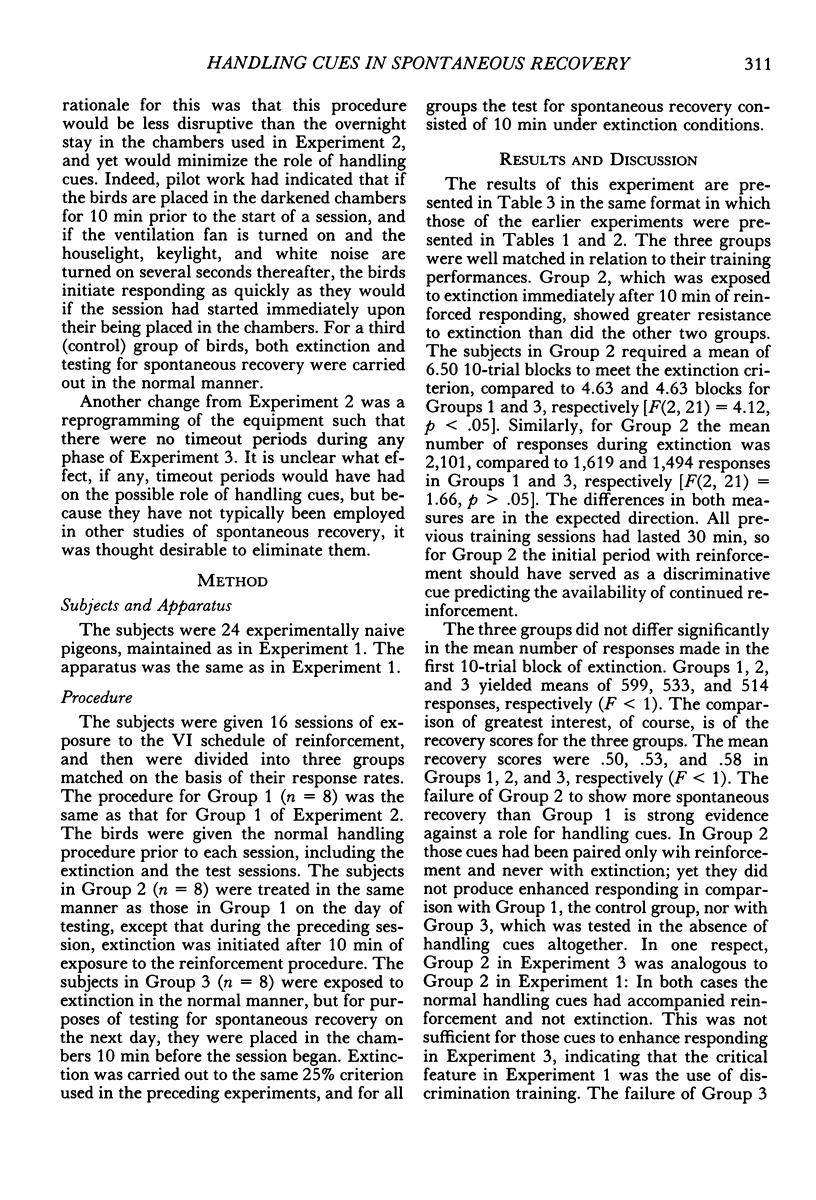
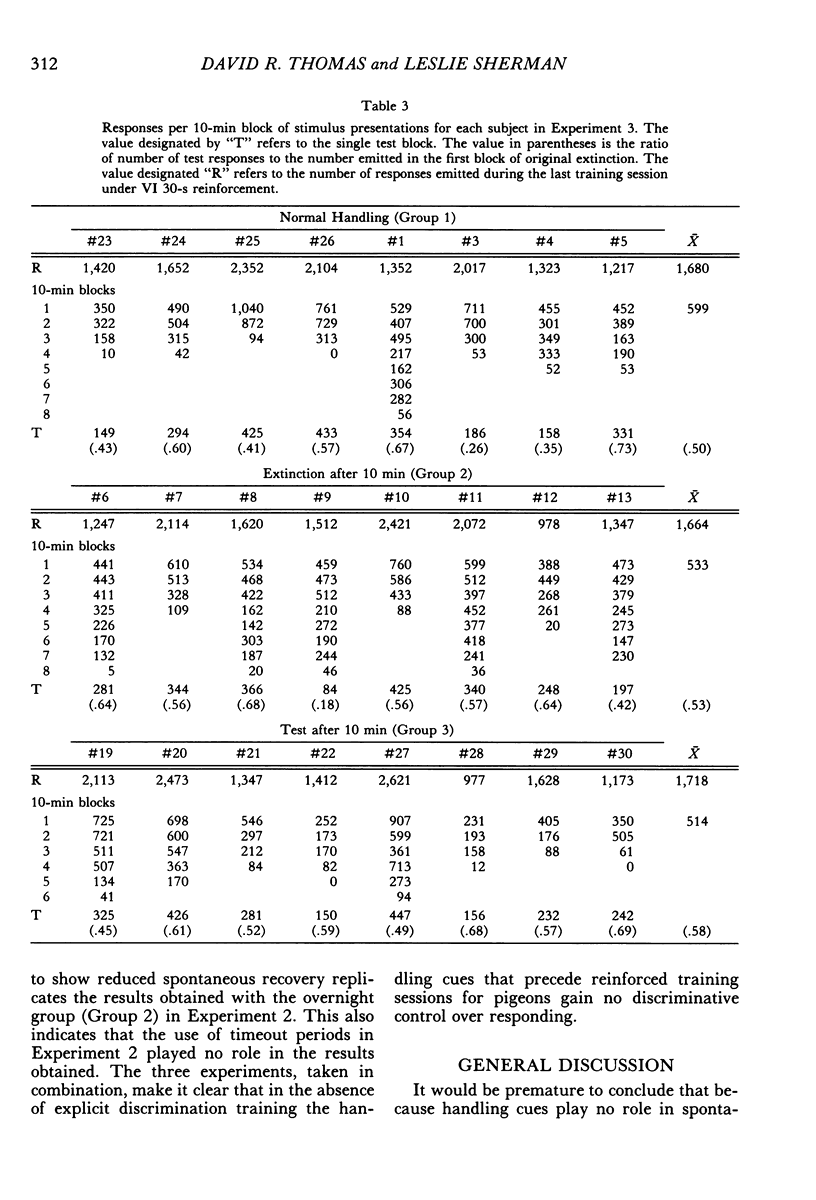
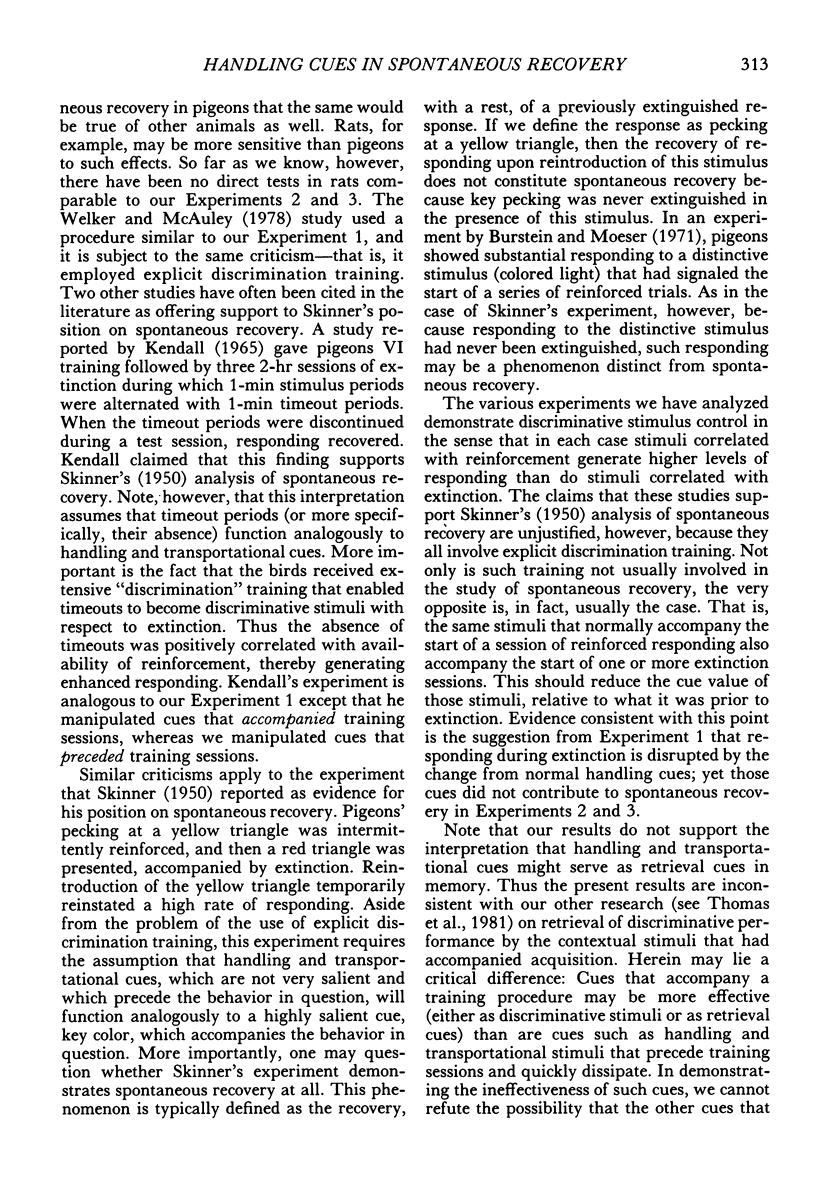
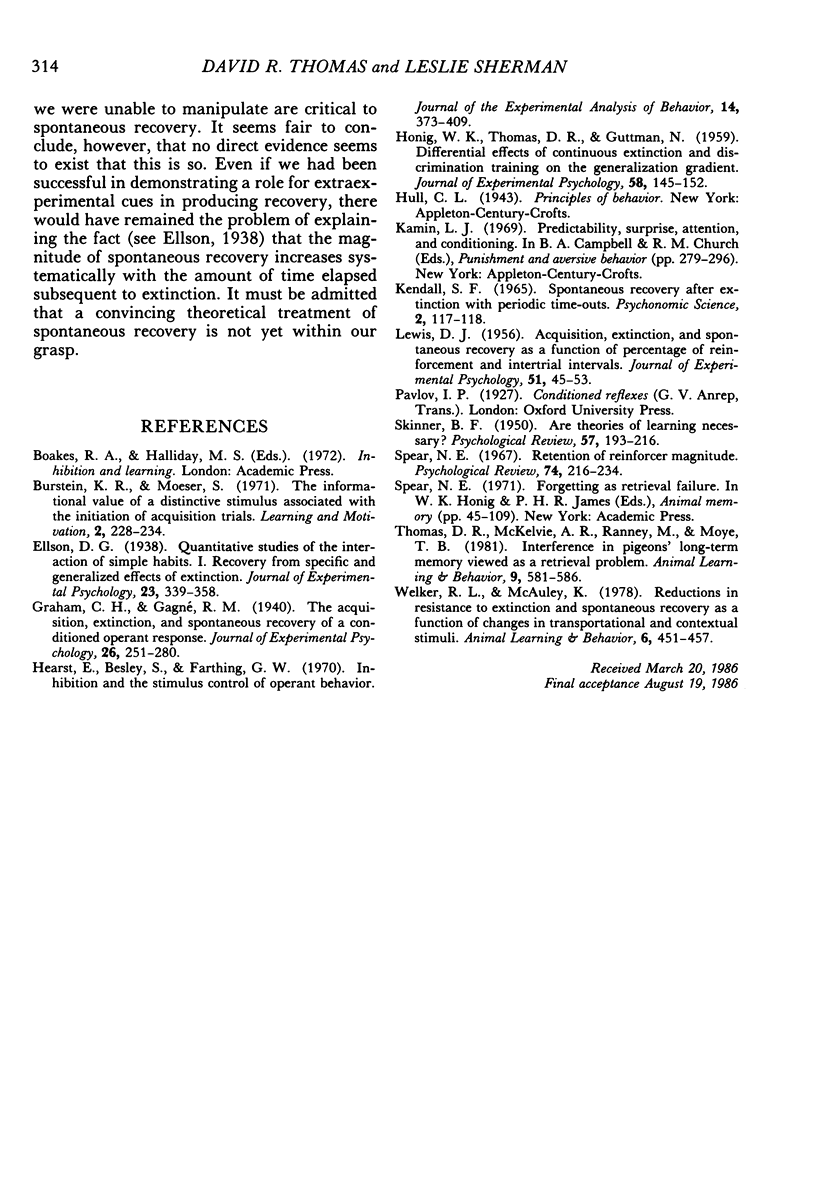
Selected References
These references are in PubMed. This may not be the complete list of references from this article.
- HONIG W. K., THOMAS D. R., GUTTM AN N. Differential effects of continuous extinction and discrimination training on the generalization gradient. J Exp Psychol. 1959 Aug;58:145–152. doi: 10.1037/h0048484. [DOI] [PubMed] [Google Scholar]
- Hearst E., Besley S., Farthing G. W. Inhibition and the stimulus control of operant behavior. J Exp Anal Behav. 1970 Nov;14(3 Pt 2 Suppl):373–409. doi: 10.1901/jeab.1970.14-s373. [DOI] [PMC free article] [PubMed] [Google Scholar]
- LEWIS D. J. Acquisition, extinction, and spontaneous recovery as a function of percentage of reinforcement and intertrial intervals. J Exp Psychol. 1956 Jan;51(1):45–53. doi: 10.1037/h0043322. [DOI] [PubMed] [Google Scholar]
- SKINNER B. F. Are theories of learning necessary? Psychol Rev. 1950 Jul;57(4):193–216. doi: 10.1037/h0054367. [DOI] [PubMed] [Google Scholar]
- Spear N. E. Retention of reinforcer magnitude. Psychol Rev. 1967 May;74(3):216–234. doi: 10.1037/h0024517. [DOI] [PubMed] [Google Scholar]


